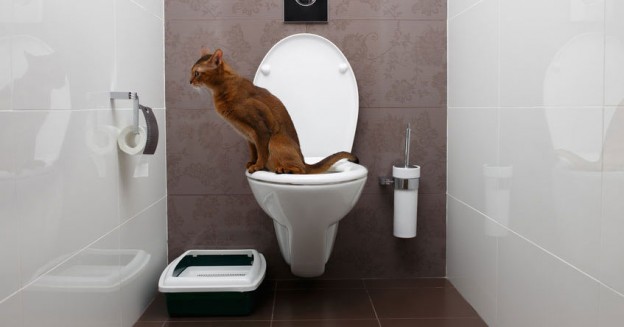We've stumbled on this post involving Can You Flush Cat Poo or Litter Down the Toilet? listed below on the net and accepted it made good sense to talk about it with you in this article.

Intro
As cat owners, it's necessary to bear in mind exactly how we take care of our feline close friends' waste. While it might appear hassle-free to purge cat poop down the toilet, this method can have harmful effects for both the setting and human health and wellness.
Alternatives to Flushing
Thankfully, there are safer and more accountable ways to take care of cat poop. Consider the adhering to alternatives:
1. Scoop and Dispose in Trash
The most common method of taking care of pet cat poop is to scoop it into a naturally degradable bag and toss it in the trash. Make sure to utilize a specialized litter scoop and take care of the waste without delay.
2. Usage Biodegradable Litter
Opt for eco-friendly cat litter made from materials such as corn or wheat. These trashes are eco-friendly and can be safely thrown away in the trash.
3. Hide in the Yard
If you have a yard, consider hiding feline waste in an assigned location far from vegetable yards and water resources. Make certain to dig deep enough to prevent contamination of groundwater.
4. Set Up a Pet Waste Disposal System
Buy a family pet garbage disposal system especially made for pet cat waste. These systems utilize enzymes to break down the waste, lowering smell and ecological effect.
Health Risks
In addition to ecological issues, purging pet cat waste can also posture health risks to people. Pet cat feces may contain Toxoplasma gondii, a bloodsucker that can trigger toxoplasmosis-- a possibly extreme health problem, especially for pregnant women and people with damaged body immune systems.
Environmental Impact
Flushing cat poop presents harmful virus and parasites into the water, posturing a substantial risk to water environments. These contaminants can negatively affect marine life and concession water high quality.
Verdict
Liable pet dog possession prolongs beyond providing food and sanctuary-- it likewise includes correct waste administration. By avoiding flushing pet cat poop down the bathroom and opting for alternate disposal techniques, we can reduce our ecological impact and protect human wellness.
Why Can’t I Flush Cat Poop?
It Spreads a Parasite
Cats are frequently infected with a parasite called toxoplasma gondii. The parasite causes an infection called toxoplasmosis. It is usually harmless to cats. The parasite only uses cat poop as a host for its eggs. Otherwise, the cat’s immune system usually keeps the infection at low enough levels to maintain its own health. But it does not stop the develop of eggs. These eggs are tiny and surprisingly tough. They may survive for a year before they begin to grow. But that’s the problem.
Our wastewater system is not designed to deal with toxoplasmosis eggs. Instead, most eggs will flush from your toilet into sewers and wastewater management plants. After the sewage is treated for many other harmful things in it, it is typically released into local rivers, lakes, or oceans. Here, the toxoplasmosis eggs can find new hosts, including starfish, crabs, otters, and many other wildlife. For many, this is a significant risk to their health. Toxoplasmosis can also end up infecting water sources that are important for agriculture, which means our deer, pigs, and sheep can get infected too.
Is There Risk to Humans?
There can be a risk to human life from flushing cat poop down the toilet. If you do so, the parasites from your cat’s poop can end up in shellfish, game animals, or livestock. If this meat is then served raw or undercooked, the people who eat it can get sick.
In fact, according to the CDC, 40 million people in the United States are infected with toxoplasma gondii. They get it from exposure to infected seafood, or from some kind of cat poop contamination, like drinking from a stream that is contaminated or touching anything that has come into contact with cat poop. That includes just cleaning a cat litter box.
Most people who get infected with these parasites will not develop any symptoms. However, for pregnant women or for those with compromised immune systems, the parasite can cause severe health problems.
How to Handle Cat Poop
The best way to handle cat poop is actually to clean the box more often. The eggs that the parasite sheds will not become active until one to five days after the cat poops. That means that if you clean daily, you’re much less likely to come into direct contact with infectious eggs.
That said, always dispose of cat poop in the garbage and not down the toilet. Wash your hands before and after you clean the litter box, and bring the bag of poop right outside to your garbage bins.
https://trenchlesssolutionsusa.com/why-cant-i-flush-cat-poop/

I ran across that post about How to Dispose of Cat Poop and Litter Without Plastic Bags when doing a lookup on the web. If you liked our blog posting please do not forget to pass it around. I truly appreciate reading our article about Can You Flush Cat Poo or Litter Down the Toilet?.
This Site
Comments on “The Risks of Flushing Cat Poop in Your Toilet - Preventive Measures”